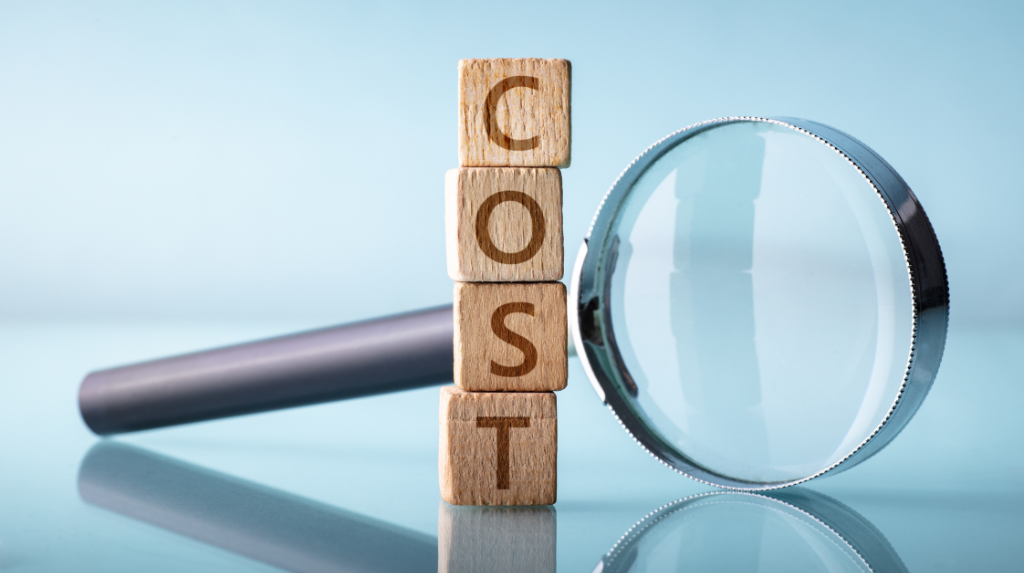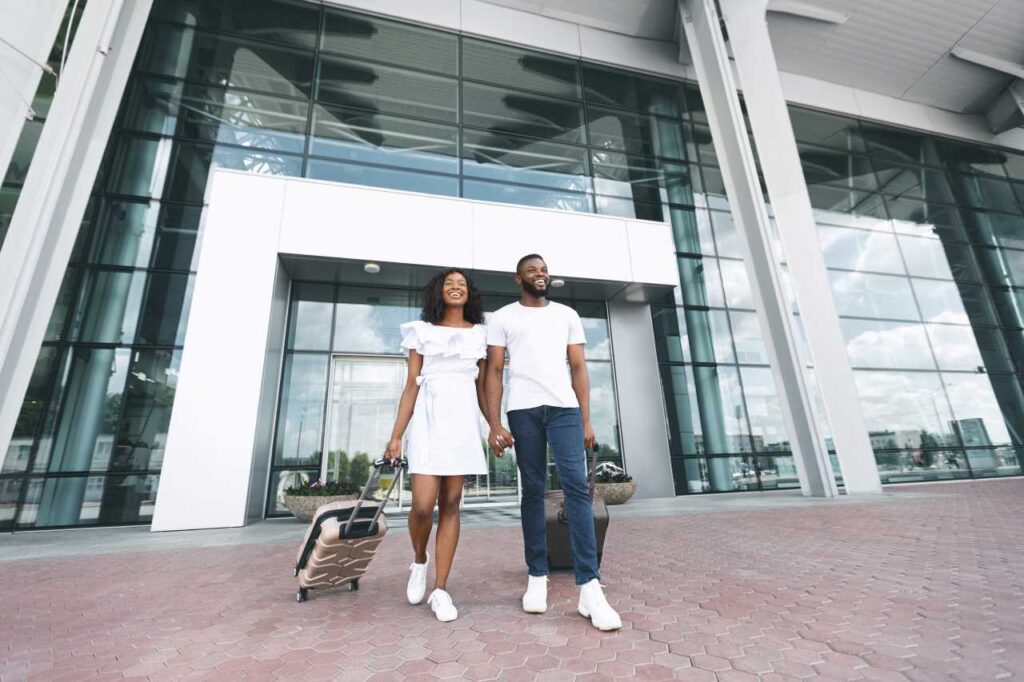If you’re visiting the United States on a B-1/B-2 visitor visa for business or tourism and you recently married a U.S. citizen or green card holder (permanent resident), you may be able to apply for a marriage-based green card to live with your spouse in the U.S.
As a B-1/B-2 visitor, you might be able to apply for a green card without leaving the U.S. through a process called “adjustment of status” (AOS). Alternatively, you can apply for a green card through consular processing in your home country. This guide will explain both options and help you choose the best approach while avoiding common mistakes that could affect your application.
Adjustment of Status vs. Consular Processing
Apply for a marriage-based green card through Adjustment of Status (AOS) if you’re in the U.S. or through consular processing if you’re outside the U.S. Both processes are similar, but there are key differences. Read on for more details to help you understand each option.
Understanding the 90-Day Rule for B-1/B-2 Visa Holders
Choosing between AOS or consular processing can be tricky, and it’s essential to consider your specific situation. One critical thing to know is the 90-day rule, which affects B-1/B-2 visa holders.
When you enter the U.S. on a B-1/B-2 visa, you’re declaring your intent to leave the country before your visa expires. If you apply for a green card shortly after arriving, you might face scrutiny, as it could look like you misrepresented your intentions. If a USCIS officer believes you lied about your intentions, they could reject your green card application and revoke your visa.
To avoid this, follow the 90-day rule: if you file your green card application within 90 days of entering the U.S., USCIS will assume you misrepresented your intent. It’s safer to wait 91 days or more before applying for your green card to avoid complications.
Two Paths to a Green Card
Your route to a green card on a Visitor Visa depends on whether your spouse is a U.S. citizen or a green card holder.
Path 1: If You’re Married to a U.S. Citizen
If you’ve married a U.S. citizen, you’ll typically apply for your green card by filing two forms:
- Form I-130 (Petition for Alien Relative): This form is filed by your U.S. citizen spouse to sponsor you.
- Form I-485 (Application to Register Permanent Residence or Adjust Status): You’ll file this form to adjust your status to a permanent resident.
If your marriage is genuine and you can prove it’s not just for a green card, you should receive your green card within 5 to 16 months. Be sure not to trigger the 90-day rule, as that could complicate your application.
Alternatively, if you prefer, you can return to your home country and apply for your green card through consular processing. This process may take a little longer but can be an option if you’re not ready to adjust your status while in the U.S.
Path 2: If You’re Married to a Green Card Holder
If your spouse is a green card holder, you must first wait for them to file Form I-130 (Petition for Alien Relative). Once USCIS approves this petition, you’ll need to wait for a visa number to become available. For spouses of green card holders, visa numbers are not always immediately available.
- If the visa number becomes available before your visa expires, you can stay in the U.S. and file Form I-485 to adjust your status.
- If the visa number becomes available after your visa expires, you’ll need to leave the U.S. and apply for your green card through consular processing.
It’s important to note that if your spouse becomes a U.S. citizen while you’re waiting for a visa number, you can switch to the process for spouses of U.S. citizens.
Important Update on Green Card Wait Times
As of March 2023, significant changes occurred in the F-2A category (spouses and children under 21 of green card holders). This change may lead to longer wait times for green card approval, especially for applicants from Mexico and other countries.
Traveling While Your Green Card Application is Pending
If you’re applying for your green card through consular processing, you won’t face issues with the 90-day rule. However, if you apply while in the U.S., traveling internationally could pose risks. U.S. Customs and Border Protection (CBP) officers may view your pending green card application as evidence that you intend to stay in the U.S. permanently, which could lead to denial of your entry.
If you’re applying through AOS and need to travel, be sure to get an advance parole travel document before leaving the country, even if you still have a valid B-1/B-2 visa. Failing to do so could terminate your application.
What Happens After Your Green Card Is Approved?
Once you receive your green card, you’re expected to make the U.S. your permanent home. Traveling too frequently or staying in your home country for long periods may raise concerns about whether you’re living in the U.S. permanently, which could jeopardize your green card status.
After holding your green card for 5 years (or 3 years if married to a U.S. citizen), you may apply for U.S. citizenship.
Special Issues for B-1/B-2 Visitor Visa Holders
Overstaying a B-1/B-2 Visitor Visa
Overstaying a B-1/B-2 visa can result in a ban from re-entering the U.S. If you marry a U.S. citizen, you may receive a waiver for your overstayed time. If you marry a green card holder, you can leave the U.S. to apply for a green card abroad or apply for AOS once your spouse becomes a U.S. citizen.
B-1/B-2 Visa Extensions
If you’re on a 6-month visitor visa, you may be eligible for a 6-month extension without leaving the U.S. To avoid falling out of status, be sure to apply for an extension or AOS before your visa expires.
Consider the K Visa
If you’re engaged as a U.S. citizen and plan to marry in the U.S., apply for a K visa (fiancé(e) visa) instead of a B-1/B-2 visa. The K visa allows couples to marry in the U.S. and provides a direct path to a green card through AOS after the wedding.
Are there any exceptions to the rule that prohibits working while on a B-1 or B-2 visa
B-1 and B-2 Visitor visa holders are generally prohibited from working in the United States. However, there are specific exceptions and clarifications regarding permissible activities associated with these visas.
Key Points on Working with B-1/B-2 Visas
Prohibition on Employment: B-1/B-2 visa holders cannot engage in any form of employment, whether skilled or unskilled, while in the U.S. This includes remote work for a foreign employer, as any work performed while physically present in the U.S. is considered unauthorized.
Permissible Activities:
B-1 Visa: Allows for business-related activities such as attending meetings, negotiating contracts, or participating in short-term training. These activities must not involve direct employment or remuneration from a U.S. source.
B-2 Visa: Primarily for tourism and leisure activities; engaging in work-related tasks is not permitted.
Job Interviews: B-1/B-2 visa holders can attend job interviews or job fairs. However, they cannot accept employment offers or start working for U.S.-based employers.
Incidental Professional Activities: While some incidental professional activities may occur (like occasional communication with an employer), engaging in substantial work can lead to complications if scrutinized by immigration authorities.
Volunteering and Internships: These are also considered forms of work and are not allowed under B-1/B-2 status.
Changing Status: If a B-1/B-2 visa holder receives a job offer, they may apply for a change of status to a work visa; however, this process can be complex and may require leaving the U.S. to apply from abroad
By following the right steps and understanding your options, you can successfully navigate the U.S. immigration process and achieve your goal of living with your spouse in the United States.
How Law and Visas Can Help?
At Law and Visas, our team of expert immigration consultants is here to make your travel straightforward and successful. Whether you’re applying for an F1 Student Visa or an H-1B Visa, we handle every step—from preparing your application to gathering the required documents.
Our Immigration Consultants and Lawyers ensure that your application meets the highest standards, with no details missed. We’ll also keep you informed throughout the process and coordinate with the immigration office or embassy on your behalf.
Law and Visas have a strong record of helping clients secure the visas/permits they need for International travel. You can call us today at +234 812 5505 986 to learn how we can help you.





